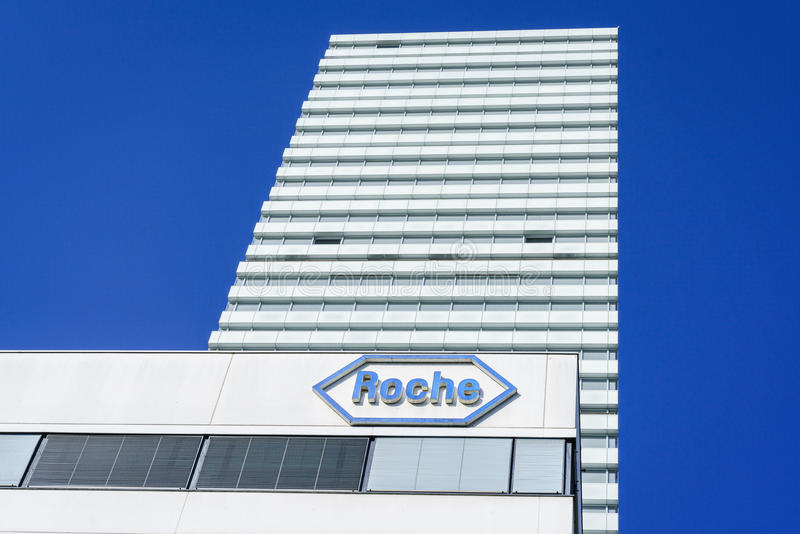
Roche Phase II GENERATION HD2 study underway
Roche released a community letter in early 2023, to share that their Phase II clinical trial to study the huntingtin-lowering drug, tominersen, is now underway. In this article, we summarise the latest news about this huntingtin-lowering drug.

Roche released a community letter last month, detailing how their Phase II clinical trial to study the huntingtin-lowering drug, tominersen, is now underway. Learn more about what this means in this article and at the recent HDSA Research Webinar, with representatives from the company.
The ups and downs of huntingtin-lowering
Tominersen is a type of drug called an ASO, which aims to lower levels of the huntingtin protein, and is delivered through spinal injections. People with Huntington’s disease make an expanded form of the huntingtin protein, due to an expansion in their huntingtin gene. By reducing the amount of the expanded huntingtin protein, scientists working on these drugs hope they might slow or halt the progression of symptoms of Huntington’s. Many companies are working on huntingtin-lowering using different types of drugs, including Roche, Wave, uniQure, and PTC therapeutics.

The path of tominersen from the research lab to this most recent clinical trial has certainly been a bumpy one. A study of tominersen which concluded in 2019 was the first to show that it was possible to lower levels of the huntingtin protein. It also appeared to be safe in people for the duration of the 3-month trial. In a subsequent Phase III trial, called GENERATION HD1, more than 800 participants were enrolled to test if tominersen might improve signs and symptoms of Huntington’s. Unfortunately, GENERATION HD1 was cut short due to safety issues. We still don’t fully understand the reasons for this, but participants who received the highest and most frequent dose of the drug did worse by many measures than patients who were given the placebo, the exact opposite of what we had hoped for.
Roche scientists then spent a long time poring over all the findings from GENERATION HD1 and uncovered some trends suggesting that tominersen may have benefitted some trial participants, especially those who were younger and began the trial with less prominent symptoms of HD. This type of analysis where scientists pick back through subsets of the data is called “post hoc”. The original GENERATION HD1 study was not designed to answer the question of whether the drug is better for this category of Huntington’s patients, but there does seem to be a potentially promising pattern. To address this question properly, Roche scientists need to run another clinical trial and this is how GENERATION HD2 came about.
GENERATION HD2 – a fresh approach to questions about tominersen
This new trial will try to answer a few different questions about the possibility of using tominersen as a treatment for Huntington’s, focusing on the safety of the drug and whether it’s properly hitting its target (huntingtin).
- First, scientists will hope to answer if lower doses of tominersen are safe as a long-term treatment for this younger, less progressed subgroup of Huntington’s patients. As with previous trials, lots of different measures will be taken to check for participant safety.
- Second, they will investigate if tominersen has impacts on biomarkers of Huntington’s, things that can be measured in blood or spinal fluid to get a picture of brain health. This will include a protein called NfL, levels of which go up in people suffering symptoms of neurodegenerative diseases.
- Thirdly, they will assess how well the drug is hitting its target in this more focused patient group. This will include a measure of the huntingtin protein itself, which we expect to be lowered, as we have seen in previous tominersen studies.
- Lastly, they’ll also look at how tominersen affects peoples’ thinking, movements, and behaviour.
Everyone recruited into this trial will be randomly assigned to one of three groups, where they will either receive a low 60 mg dose of tominersen, a higher 100 mg dose of tominersen, or a placebo dose. Both doses are lower than the 120 mg tested in GENERATION HD1. As per previous tominersen trials the drug will be given by spinal tap, but in this trial, everyone will receive their dose every 4 months for a total of 16 months of treatment and monitoring. Data collected will be assessed approximately every 4 months by an independent data monitoring committee (iDMC) which will monitor the trial safety and look at the clinical and biomarker data to see how things are progressing. This is confidential, unless there are serious issues, and completely independent of Roche’s own analysis of the data which will happen when the trial ends.
Who will be enrolled into this new trial?
This new trial will last 16 months, and approximately 360 participants will be enrolled. To follow up on their post hoc analysis from GENERATION HD1, this study will be enrolling participants aged 25-50 years old who have only the very early signs of Huntington’s. You may have read the terms “prodromal” or “early manifest,” which is the science-y way doctors and researchers refer to people with Huntington’s right around the time that movement symptoms appear.
The study will take place across 4 continents with sites in 15 countries spread across North America, Europe, South America and Oceania. Precise information about the sites will become available once they are each approved and will be posted on clinical trial directories such as www.clinicaltrials.gov (global) and www.hdtrialfinder.org (North America), but sites are expected in Argentina, Austria, Australia, Canada, Denmark, France, Germany, Italy, New Zealand, Poland, Portugal, Spain, Switzerland, UK and the USA. Each site may have slightly different rules about participant recruitment i.e. how close to the site you need to live to be considered for enrollment, and not all of the sites from previous tominersen trials will participate in the GENERATION HD2 trial. Keep in mind that most clinical trials recruit through strong relationships between doctors and patients.
Those individuals who were previously in a trial testing tominersen would only be eligible for enrollment in GENERATION HD2 if they had received the placebo dose. Roche stated that their decision to exclude individuals who previously received tominersen was not made lightly, and was made “following extensive consultation with HD experts and community leaders.” This news, and the narrower age range for eligibility, may be very disappointing for some. But Roche is committed to answering important safety questions about tominersen, based on previous data. Although this trial will focus on younger people with less advanced HD symptoms, Roche emphasised that they have not forgotten the complete range of patients which comprise the HD community, nor the commitment of previous participants, and there may be other opportunities for these folks in future.
How can I learn more about GENERATION HD2?
Learn more
Sources & References
For more information about our disclosure policy see our FAQ…


